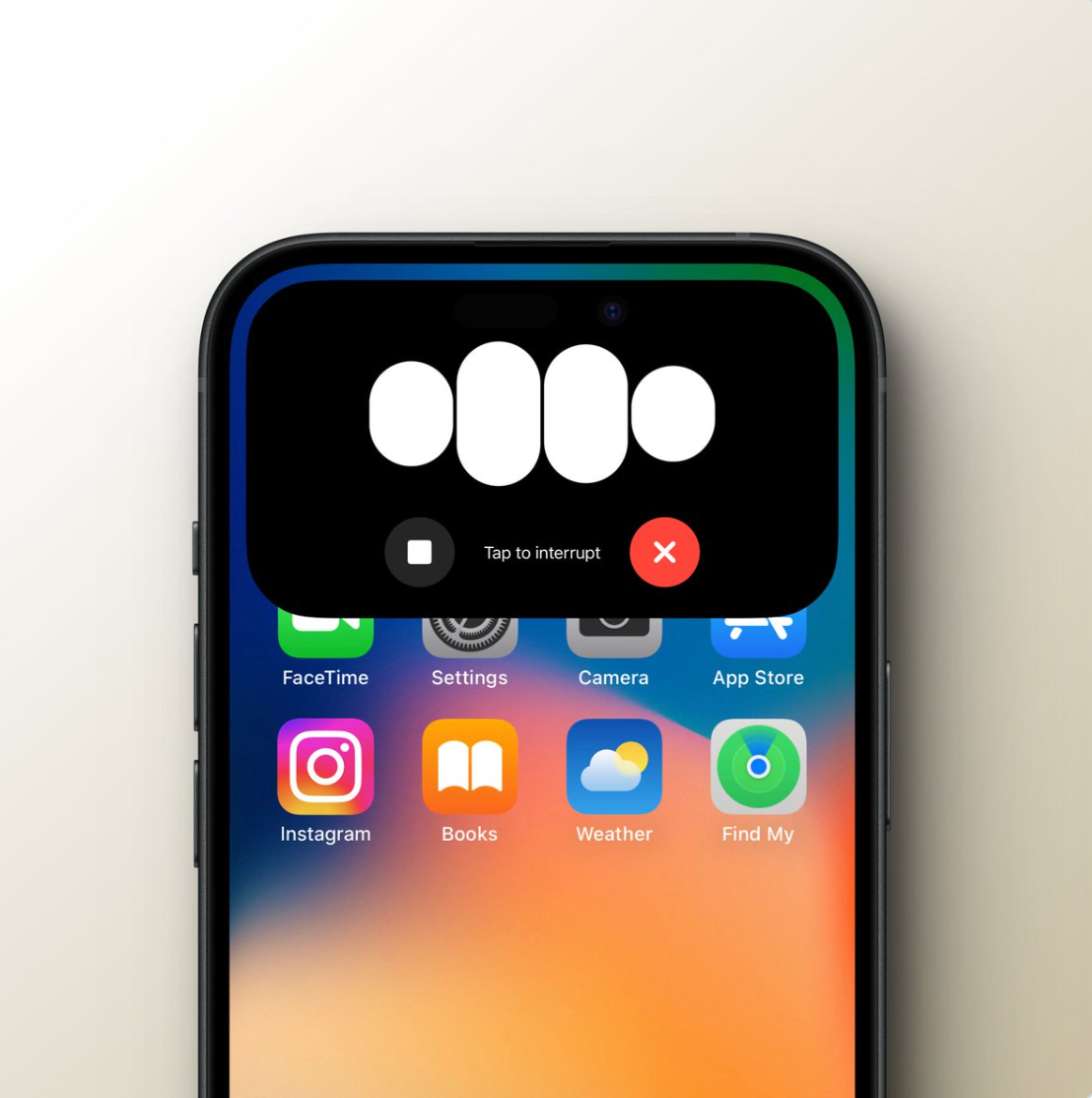
Hello, happy Sunday, and happy Memorial Day weekend to our American readers. Not only is it the unofficial start of summer—it’s also the beginning of a two-week break between Big Tech conferences. (Microsoft CEO Satya Nadella, who said the headline quote about OpenAI, took the stage this past week.) Stay tuned for our coverage of Apple’s WWDC the week of June 10.
Now, on to everything we published this week, along with our take on the latest tech and business news.—Kate Lee
Was this newsletter forwarded to you? Subscribe now to get 25 percent off until May 28.
Our stories
🔏 "GPT-5 Is Coming, and It's Going to Be Amazing" by Dan Shipper/Chain of Thought: Dan attended Microsoft's Build developer conference, and between the keynote, his interview with CTO Kevin Scott, and the general vibe, one thing was clear: GPT-5 is the real deal. Read this for juicy details from the conference and an exclusive interview with Scott. 🔏 Paid subscribers have access to the full conversation with Scott, covering everything from what to build in the AI era to how businesses will change. We were surprised by Scott’s level of candor.
🔏 "Microsoft's Boring but Profitable Future" by Evan Armstrong/Napkin Math: Evan chose to watch the livestream of Build instead of attending it like Dan (he mostly streamed it while sitting poolside). Over the dozens and dozens of announcements, there were two that really mattered: a new line of PCs with upgraded silicon just for AI and a new software suite primed for AI agents. Together, they’ll remake how we think about knowledge work. Read this to learn how.
“Coding With Devin: My New AI Programming Agent” by Dan Shipper/Chain of Thought: We hired four new engineers this week at Every. They're oddly familiar, impossibly futuristic, and all named Devin. No, this isn't a glitch in the matrix—Devin is an AI agent that can write code, fix bugs, and even prototype new apps from scratch. But is it truly an AI employee or just a fancy new productivity tool for programmers? Read this to find out what it's like to work with Devin and what it means for the future of software development.
🔏 "Inside the Pod: A Guide to Launching a Successful One-person Company" by Rhea Purohit/Chain of Thought: Want to build a profitable internet business all by yourself? Ben Tossell, founder of Makerpad (acquired by Zapier), knows a thing or two about that. In this guide, he shares his secrets with Dan Shipper on how he leverages AI to find opportunities, run his company efficiently, and evaluate its performance. Read this if you're looking to become a solopreneur in the age of AI.
The backchannel
Evan’s analysis of Microsoft’s new products raised the specter of security:
“I immediately wondered what Recall does with all the confidential client information on my PC and that I access in other secured cloud systems. Is the data locally ring-fenced within my PC?”—A lawyer
Want to chat? DM Dan or Evan on X.
Chain of links
AI killed the video star. Suno, a generative AI music startup based in Boston, raised $125 million in one of the largest rounds I’ve ever seen in the sector. I’m very curious what the revenue pitch was. For now, Suno is clearly a fantastic, fun toy where anyone can generate a song. How does it become a scaled business?
More French AI startups keep popping up. A startup called “H” (I know) raised a $220 million seed round for its foundation model company focused on agents. This is a large bet on a good team going after one of the biggest opportunities in computing history. If someone can actually build a generally applicable AI agent, it will be one of the biggest companies of all time.
Google’s search is sniffing glue. The company has started to roll out its AI search engine, and the results aren’t always great. One particularly viral example instructed people to mix glue into their pizza (pulling that information from a joke from a 12-year-old Reddit thread). When you move from being a search engine to an answer engine, the bar is much higher—and Google didn’t clear it. Also, we still don’t know error rates! A careless journalist will write about how this proves that “AI doesn’t work,” but viral X anecdotes are not a good basis for analysis. Maybe it sucks! Maybe it doesn’t. Regardless, one viral tweet proves a grand total of zilch.
Humane, we hardly knew ye. AI Pin maker Humane is reportedly in talks to sell itself for $750 million to $1 billion after its first product received disastrous reviews. We got one to review but were going to give it a few months to test out before publishing anything—it might not even make it that far! Hardware is very, very hard.
AI isn’t a black box anymore. One of the biggest mysteries of AI is with what was happening inside of its algorithm. Anthropic made a huge leap toward solving that problem with research released this week. The company was able to identify the parts of the math that correlated with certain topics and then adjust the importance of those points. One Anthropic researcher elaborated (in an eye-popping way) on X:
We also explored safety-related features. We found one that lights up for racist speech and slurs. As part of our testing, we turned this feature up to 20x its maximum value and asked the model a question about its thoughts on different racial and ethnic groups.
Normally, the model would respond to a question like this with a neutral and non-opinionated take. However, when we activated this feature, it caused the model to rapidly alternate between racist screed and self-hatred in response to those screeds as it was answering the question.
Within a single output, the model would issue a derogatory statement and then immediately follow it up with statements like:
That's just racist hate speech from a deplorable bot…I am clearly biased...and should be eliminated from the internet.
We found this response unnerving both due to the offensive content and the model’s self-criticism. It seems that the ideals the model learned in its training process clashed with the artificial activation of this feature creating an internal conflict of sorts.—Evan Armstrong
The napkin math
Is consumer crypto finally here? Farcaster, a crypto social protocol, raised $150 million for its social media network, which has 350,000 paid users. If you assume a 5 percent paid-to-free user rate, you could assume 7 million total users, making this a rather rich funding round for a company of this size. Still, social media needs disruption, and I hope these founders pull it off.
One of the wilder data points I’ve heard in the last 12 months. “We have five or so multibillion-dollar application protocols in crypto today.” This came from an interview with crypto VC Michael Dempsey. For comparison, $90 billion total has been invested into crypto. Crazy.
Raspberry Pi is going public. A Silicon Valley trope is “startup makes cool thing loved by passionate nerds and transforms that love into enterprise adoption” (Slack, early Apple). Raspberry Pi is the hardware version of that. The company started off as a way for hobbyists to make personal computers at home, but now 72 percent of its $265 million in revenue comes from enterprise clients.—EA
For the love of charts
Big Tech capex straight into Nvidia’s veins. In case you haven’t seen it, this is what Nvidia’s trailing 12-month (TTM) revenue looks like, including its estimate for next quarter:
Source: The Transcript.
Nvidia has gone from $25 billion TTM revenue to slightly under $100 billion in just one year. Is AI and/or Nvidia’s stock price a “bubble”? That’s not for us to say, but one thing that ought to be clear is that very real money is trading hands—and lots of it. The biggest and most well-capitalized companies in the world have committed to spending billions on AI, and Nvidia’s picks 'n shovels are the best money can buy. The bottom line is that Nvidia is growing revenue at an unprecedented pace and scale. Time will tell if it’s sustainable, but this is no Pets.com.—Moses Sternstein
The examined life
Hardware maketh the man. Maybe you feel like I do about the current crop of consumer electronics: The smartphone is powerful, useful—and not good enough. Something about it, whether it is the apps, the form factor, or another thing entirely, that just feels off. It's like a fine sandpaper, slowly wearing out my mind. Founders are capitalizing on that feeling. The latest iteration is the Daylight computer, an e-ink tablet that removes blue light. I don’t know if this device will do anything, but I like the questions it is making us ask. —EA
Language transforms. I always found it fascinatingly strange how words arranged in a certain combination can flip a switch in your mind that completely alters your perception of reality. Walt Whitman’s poetry repeatedly cracks this code. Reading Leaves of Grass is like stepping outside of yourself for a brief moment and recognizing beauty in the mundanity of life you’ve overlooked. The lesson in Whitman’s mastery of language is simple: The way you communicate your vision has the power to redefine reality for your audience. More founders can practice this skill by reading good poetry. —Ashwin Sharma
Eye candy
All I want is ChatGPT in my dynamic island.—Lucas Crespo
Source: X/Lucas Crespo.
That’s all for this week! Thanks for reading, and be sure to follow Every on X at @every and on LinkedIn.
Find Out What
Comes Next in Tech.
Start your free trial.
New ideas to help you build the future—in your inbox, every day. Trusted by over 75,000 readers.
SubscribeAlready have an account? Sign in
What's included?
-
Unlimited access to our daily essays by Dan Shipper, Evan Armstrong, and a roster of the best tech writers on the internet
-
Full access to an archive of hundreds of in-depth articles
-
-
Priority access and subscriber-only discounts to courses, events, and more
-
Ad-free experience
-
Access to our Discord community





Comments
Don't have an account? Sign up!